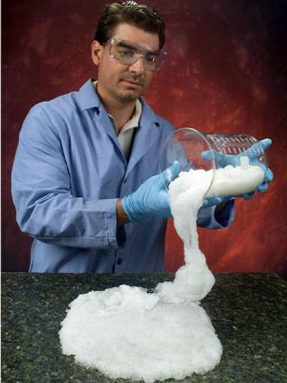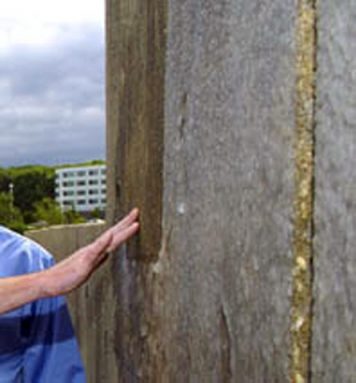Supergoo to the rescue
The absorbent stuff in diapers may help clean up after a terrorist attack
 |
|
Several crystals on the market (not for eating) absorb and hold huge quantities of water. Once exposed to water, these crystals (as shown here) turn into a thick goo that will stick to surfaces. |
| Argonne National Laboratory |
Inside a disposable diaper are tiny crystals of a material called sodium polyacrylate that can absorb hundreds of times their weight in water. Just a small amount of the stuff — sometimes called “Super Slurper” — can sop up a lot of liquid, no matter where it comes from. When the crystals absorb water, they form a thick and sticky goo (which is why a used diaper gets so heavy).
Now, scientists at the Argonne National Laboratory in Illinois have found a new use for this goo: cleaning up after a terrorist attack.
A dirty bomb is a weapon that uses explosives to create a cloud of radioactive materials. Radioactive materials send off energy in the form of radiation, including a form that’s used to make X-rays of your teeth. But too much radiation can make you sick, and even die. So, if a dirty bomb were ever to go off (which hasn’t happened in the U.S.), particles of radioactive material would be released into the air. Terrorists have talked about making such an explosion to cause confusion and panic.
 |
|
One of the supergoo mixes has been sprayed onto a wall. The goo remains moist to the touch for hours, until cleanup crews are ready to vacuum it off – along with any radioactive debris its sucked in – for safe disposal. |
| Argonne National Laboratory |
But blown by the wind, the dangerous particles released by such a detonation can stick to building materials like marble or brick. This is where the supergoo comes in. If a dirty bomb were to go off, scientists could spray the sticky gel onto buildings. Afterward, when teams clean up the gel, the radioactive particles would peel off with it.
In the laboratory, Argonne engineer Michael Kaminski and his team have shown that one treatment with the thick gel can remove 80 percent of radioactive leftovers on marble. After two treatments, 90 percent of the leftovers were removed. Many of our national monuments are made of marble, so Kaminski’s supergoo would aid cleanup efforts without damaging the monuments themselves.
The goo isn’t only successful; it’s also nontoxic. “In fact,” he says, “you could literally eat some of the formulations that we’ve made.” But the goo doesn’t work everywhere. It works so well on marble partly because the polished marble used on most monuments is extremely smooth — there aren’t many holes to shelter radioactive dust. Brick, on the other hand, is rough, so the gel doesn’t work as well. “Removal rates are poor,” Kaminski says.
Kaminski started working on the super-cleaning supergoo after the Department of Homeland Security asked scientists to come up with ways to clean up radioactive materials. It’s scary to think about a dirty bomb going off, but it’s more disturbing to think about a dirty bomb going off and not knowing how to respond.
Going Deeper:







